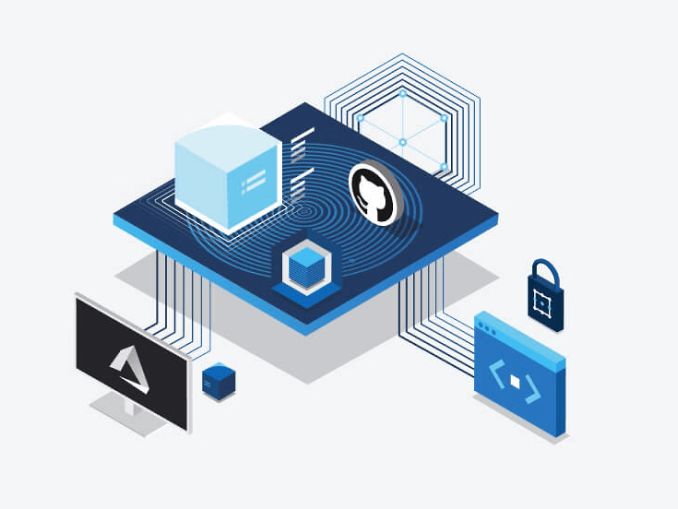In the ever-evolving world of cloud computing, Azure has become one of the leading platforms for building, deploying, and managing applications. However, with the rapid adoption of Azure, the need for securing cloud environments is more critical than ever. Traditional security practices that operate in silos, implemented at the end of the development lifecycle, are no longer sufficient. To meet the increasing demand for agility and security, many organizations are turning to DevSecOps — a development approach that integrates security practices into every part of the DevOps pipeline.
In this post, we’ll explore the importance of automating Azure security through DevSecOps, highlight key tools and techniques, and show you how to incorporate security seamlessly into your Azure workflows.
Table of Contents
What is DevSecOps?

DevSecOps is a combination of development (Dev), security (Sec), and operations (Ops). It’s a mindset that seeks to integrate security into every phase of the software development lifecycle (SDLC), from planning to deployment and monitoring. Unlike traditional approaches, where security is handled separately from development and operations, DevSecOps embeds security practices early and continuously, ensuring that security is a shared responsibility.
In Azure, DevSecOps allows you to build, test, and deploy applications with security at the forefront, ensuring that vulnerabilities are identified and remediated early in the lifecycle. Automating this process with the right tools can help reduce manual interventions, accelerate development, and improve overall security posture.
Why Automate Azure Security with DevSecOps?
- Continuous Security Monitoring: With DevSecOps, security checks and validation occur in real-time, throughout the entire software lifecycle, ensuring continuous monitoring for vulnerabilities and threats.
- Faster Incident Detection: Automated security tools integrated into your CI/CD pipeline can quickly detect suspicious activity, enabling faster response times to security incidents.
- Scalability: As organizations scale their Azure environments, manually checking security across a vast infrastructure becomes impractical. Automation helps manage security at scale.
- Reduced Risk of Human Error: Automation eliminates manual processes that are prone to human error, reducing the risk of security vulnerabilities being overlooked.
- Compliance: For organizations with strict regulatory requirements, automating security helps maintain compliance by ensuring that security policies are consistently enforced.
Key Tools for Automating Azure Security
Several tools can be integrated into your Azure environment to automate security practices within a DevSecOps pipeline. Below are some of the most effective tools for securing your Azure applications and resources.
1. Azure Security Center
Azure Security Center provides unified security management and advanced threat protection for all Azure resources. It allows you to monitor security at scale, apply security policies, and ensure compliance across your Azure environment. With Security Center, you can automatically identify vulnerabilities, implement security controls, and trigger alerts when security issues are detected.
How to Automate:
- Security Policy Automation: Security Center allows you to automate security policies across multiple subscriptions to ensure consistent security configuration.
- Threat Detection: Security Center continuously scans for vulnerabilities and threats, alerting you of potential issues in real time.
2. Azure Sentinel
Azure Sentinel is a cloud-native SIEM (Security Information and Event Management) solution that allows you to detect, investigate, and respond to security threats in real-time. Sentinel integrates seamlessly with Azure resources, pulling logs from various sources to create actionable security insights.
How to Automate:
- Automated Playbooks: With Sentinel, you can create automated workflows (playbooks) that automatically respond to incidents by triggering actions like isolating compromised resources or notifying security teams.
- AI-Driven Insights: Sentinel uses machine learning to help detect abnormal activity and emerging threats, reducing the need for manual monitoring.
3. Azure DevOps
Azure DevOps is an integrated suite of development tools for planning, coding, testing, and deploying applications. By integrating security practices into your DevOps pipelines, you can ensure security testing occurs automatically at every stage.
How to Automate:
- Automated Security Testing: Incorporate tools like static application security testing (SAST) and dynamic application security testing (DAST) directly into your Azure DevOps pipelines to automatically detect vulnerabilities during the build or release process.
- Infrastructure as Code (IaC) Security: Use Azure DevOps to deploy infrastructure as code (e.g., using Azure Resource Manager templates) with built-in security validation, ensuring that your infrastructure is secure before deployment.
4. WhiteSource Bolt
WhiteSource Bolt is a security tool that scans open-source components for vulnerabilities. It integrates with Azure DevOps to identify known security risks in your dependencies and suggests fixes.
How to Automate:
- Automated Vulnerability Scanning: WhiteSource Bolt automatically scans for vulnerabilities in your project’s open-source components, ensuring that your dependencies are secure before deployment.
5. HashiCorp Vault
HashiCorp Vault is a secrets management tool that helps safeguard sensitive data such as API keys, passwords, and certificates. Integrating Vault into your Azure DevSecOps workflow ensures that secrets are managed securely across your pipeline.
How to Automate:
- Automated Secrets Injection: Use Vault to automatically inject secrets into your applications during runtime, eliminating the need for hardcoding sensitive information into your codebase.
Best Practices for Automating Azure Security with DevSecOps
- Shift Left Security: Start incorporating security practices as early as possible in the development lifecycle. The earlier security is addressed, the less costly it is to fix vulnerabilities.
- Continuous Integration and Continuous Deployment (CI/CD): Ensure that security checks are automated and integrated into your CI/CD pipelines. Tools like Azure DevOps and GitHub Actions allow security tests to run automatically during every build and deployment.
- Automate Vulnerability Scanning: Continuously scan your codebase, dependencies, and Azure resources for vulnerabilities. This can be done using tools like WhiteSource Bolt, Azure Security Center, or custom security scanners integrated into your DevOps pipelines.
- Use Infrastructure as Code (IaC): Automate your Azure resource provisioning with IaC tools like Terraform or ARM templates. These tools allow you to define secure configurations that can be version-controlled and audited.
- Automate Incident Response: Utilize Azure Sentinel to create automated playbooks that take immediate action when a threat is detected, reducing the time to respond to incidents.
Conclusion
Automating security in your Azure environment through DevSecOps is an essential strategy for reducing risks, ensuring compliance, and maintaining agility. By integrating security into your development workflows, you can continuously monitor and secure your applications and infrastructure without sacrificing speed. With the right set of tools — such as Azure Security Center, Sentinel, Azure DevOps, and others — you can ensure that security is an inherent part of your Azure DevOps pipeline and that your cloud infrastructure is protected at every stage.
Remember, security is not a one-time effort. It’s an ongoing process, and automation plays a vital role in achieving continuous security. Start integrating these practices and tools into your Azure environment today, and stay ahead of potential threats.
Stay tuned for more insights in our 30 Days of Azure Security series!

